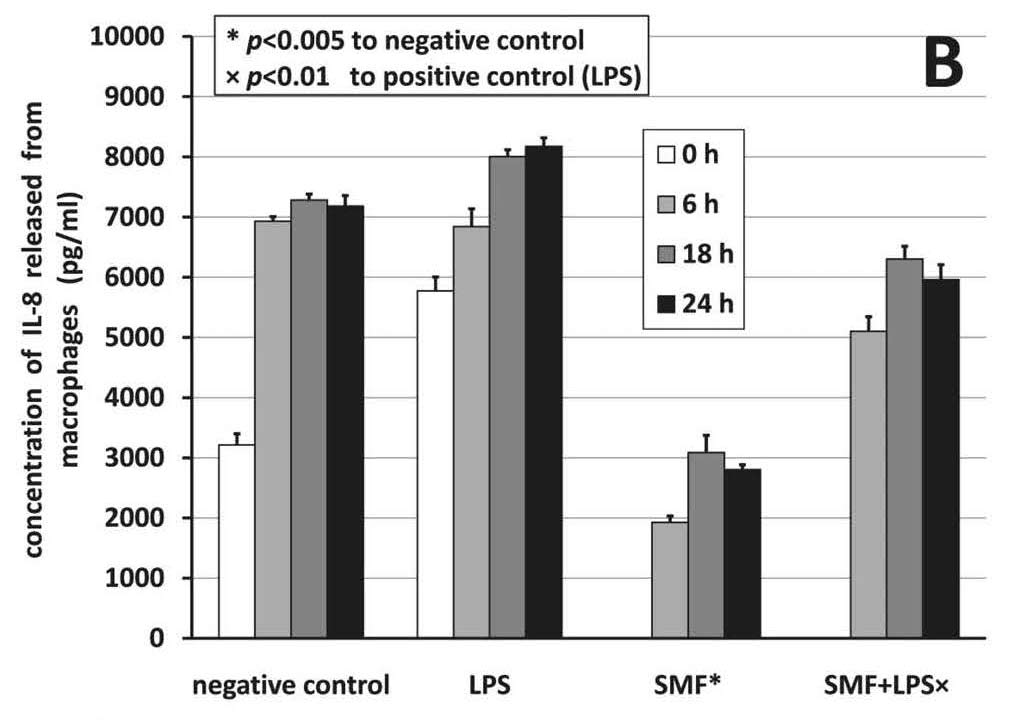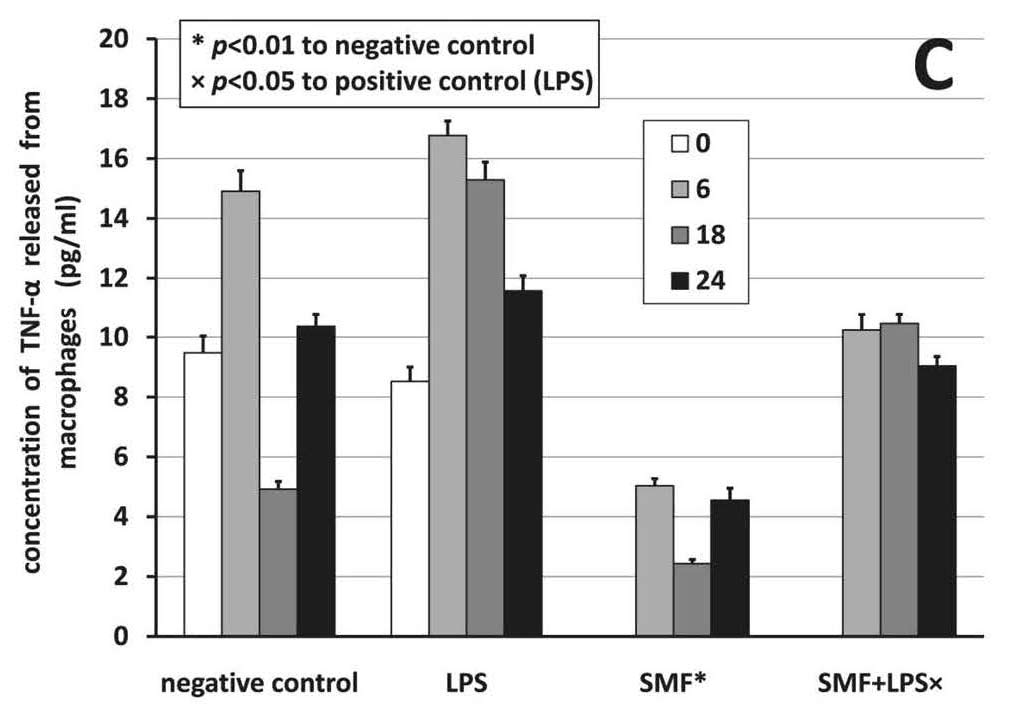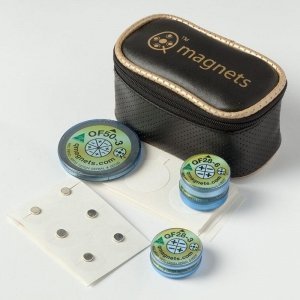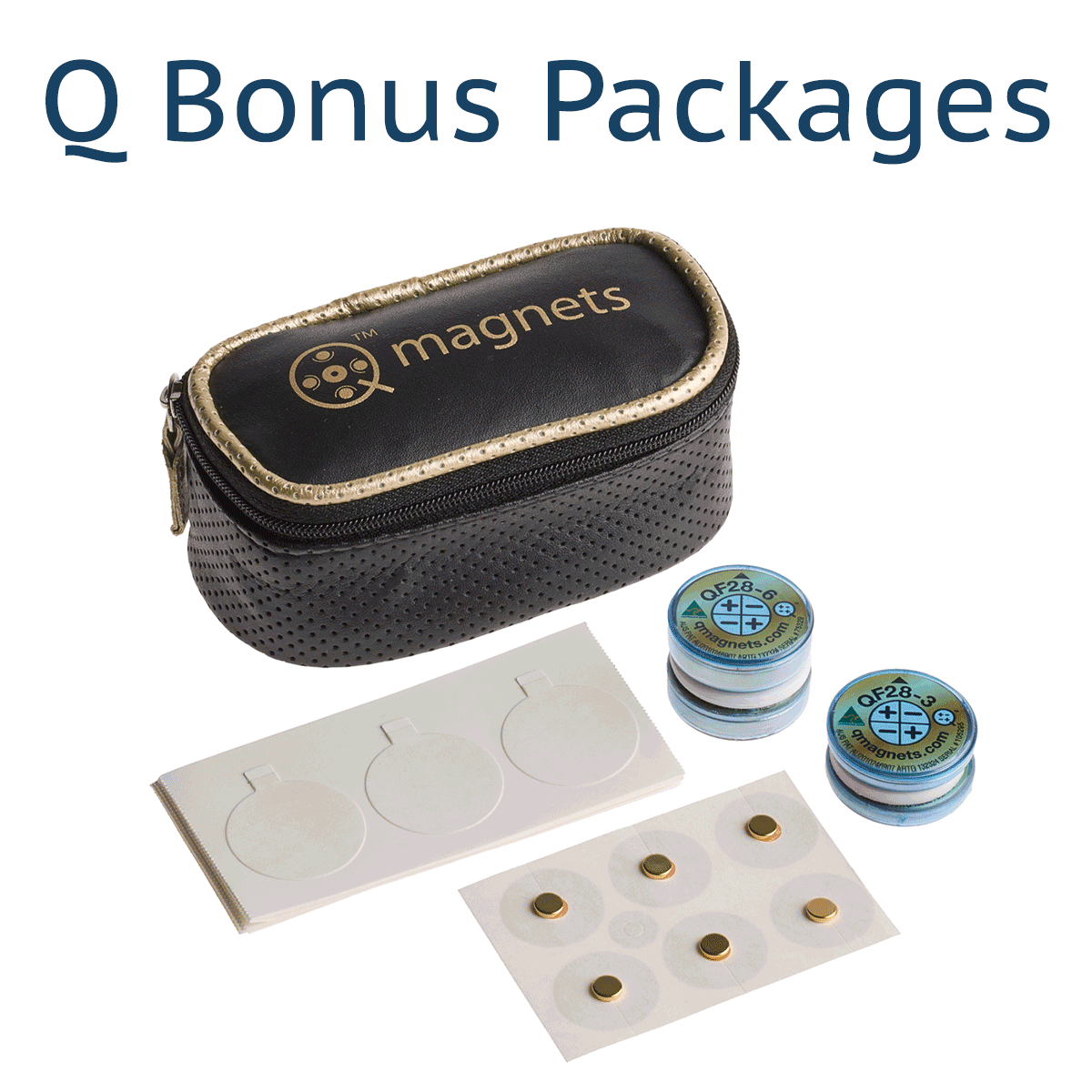This in-vitro (cell study) experiment demonstrated convincing evidence that exposure to a strong, inhomogeneous static magnetic field (iSMF) for up to 24 hrs has a significant inhibitory effect on the release of pro-inflammatory cytokines IL-6, IL-8, and TNF-α from macrophages as compared to negative, untreated control. There is also evidence that low-dose naloxone with morphine has a similar effect of pro- and anti-inflammatory cytokines (Lin, et al. 2010). This suggests that the action of iSMF-exposure may be similar to that of serum morphine.



Also in agreement with the results of this study was Chionna et al (2003) that a 6 mT SMF-exposure affected cell shape as a result of cytoskeleton rearrangements or by influencing the structural components of the plasma membrane directly.
These studies could be regarded as proof that SMF-exposure in fact has a beneficial effect on human macrophages and lymphocytes in-vitro, and as such SMF-exposure should be a worthy candidate of further investigations in clinical trials including diseases with inflammatory background.
Read our article on How Q magnets work to learn three factors unlock the healing power of static magnets.
REFERENCES:
Vergallo C, et al. (2013) In Vitro Analysis of the Anti-Inflammatory Effect of Inhomogeneous Static Magnetic Field-Exposure on Human Macrophages and Lymphocytes. PLoS ONE 8(8): e72374. PMID: 23991101; doi
Also:
Chionna A, et al. (2003) Cell shape and plasma membrane alter
ations after static magnetic fields exposure. Eur J Histochem 47: 299–308.
PMID: 14706925
Lin, S.L., et al. (2010) “Ultra-low dose naloxone upregulates interleukin-10 expression and suppresses neuroinflammation in morphine-tolerant rat spinal cords.” Behav Brain Res 207: 30–36. PMID: 19799935; doi







